The ANDA process is the legal pathway in the United States that lets generic drug companies get approval to sell cheaper versions of brand-name medications. It’s not a shortcut-it’s a carefully designed system that balances patient safety, innovation, and affordability. Since the Hatch-Waxman Act became law in 1984, this process has been responsible for bringing 90% of all prescriptions in the U.S. to generic drugs, saving consumers over $2.2 trillion in the last decade alone.
What Is the ANDA Process?
The Abbreviated New Drug Application (ANDA) is the formal submission a company must make to the U.S. Food and Drug Administration (FDA) to get approval for a generic drug. Unlike the full New Drug Application (NDA) used by brand-name companies-which requires years of clinical trials to prove safety and effectiveness-the ANDA skips those studies. Instead, it relies on the FDA’s previous approval of the original drug, called the Reference Listed Drug (RLD).
The goal is simple: prove your generic version is the same as the brand drug in every way that matters. That means the same active ingredient, the same strength, the same way it’s taken (pill, injection, inhaler), and the same effect on the body. The FDA doesn’t need to retest whether it works-it already knows from the brand drug. All you have to show is that your version behaves the same way in the body.
The Legal Foundation: The Hatch-Waxman Act
The ANDA process exists because of the Drug Price Competition and Patent Term Restoration Act of 1984, better known as the Hatch-Waxman Act. Named after its sponsors, Senator Orrin Hatch and Representative Henry Waxman, this law was a compromise. Brand-name companies got extended patent protection to make up for time lost during FDA review. Generic companies got a clear, faster path to market.
Before Hatch-Waxman, generic manufacturers had to repeat expensive clinical trials just to prove a drug worked. That made generics too costly to produce. After the law passed, the number of generic drugs available jumped. Today, nearly all prescriptions in the U.S. are filled with generics. The law didn’t just lower prices-it reshaped the entire pharmaceutical market.
Core Legal Requirements for ANDA Approval
To get an ANDA approved, a company must meet five non-negotiable legal and scientific standards set by the FDA:
- Identical Active Ingredient: The generic must contain the exact same active pharmaceutical ingredient as the brand drug. No substitutions. No changes. Even a tiny difference can trigger rejection.
- Same Dosage Form, Strength, and Route: If the brand drug is a 10mg tablet taken by mouth, the generic must be the same. No liquid versions, no higher doses, no patches unless you file a special petition.
- Bioequivalence: This is the most critical part. The generic must deliver the same amount of drug into the bloodstream at the same rate as the brand drug. The FDA requires pharmacokinetic studies showing that the 90% confidence interval for peak concentration (Cmax) and total exposure (AUC) falls between 80% and 125% of the brand drug’s values. This range is based on decades of clinical data and is considered scientifically equivalent.
- Identical Labeling: The prescribing information must match the brand drug’s label, except for minor differences like the generic manufacturer’s name or patent information. You can’t add new warnings or remove existing ones without FDA approval.
- Manufacturing Compliance: The facility where the drug is made must follow Current Good Manufacturing Practices (cGMP). The FDA inspects these sites-often without notice-and rejects applications if there are violations. In 2022, 68% of FDA Form 483 observations (notices of violations) came from overseas facilities.
What You Must Submit: The ANDA Package
An ANDA isn’t just a form. It’s a massive technical dossier with 15 modules, submitted electronically in eCTD format. Here’s what’s required:
- Form FDA-356h: The official application form.
- Form FDA-3674: The user fee cover sheet.
- Chemistry, Manufacturing, and Controls (CMC): Detailed documentation on how the drug is made, including raw materials, equipment, process controls, and quality testing. This section causes the most rejections-23% of applications are refused because of incomplete CMC data.
- Bioequivalence Study Report: Must follow FDA guidance, use validated methods, and include data from at least 24 healthy volunteers.
- Stability Data: Shows the drug won’t break down over time under normal storage conditions. Exhibit batches must be made at commercial scale-either 10% of the planned commercial batch size or 100,000 dosage units, whichever is larger.
- Patent and Exclusivity Certifications: You must certify whether the brand drug’s patents are expired, will expire soon, or if you’re challenging them. This triggers legal consequences.
There’s also a $129,500 user fee for a new ANDA submission under the Generic Drug User Fee Amendments (GDUFA) for fiscal year 2024. That fee funds faster FDA reviews. Without it, your application won’t even be accepted.
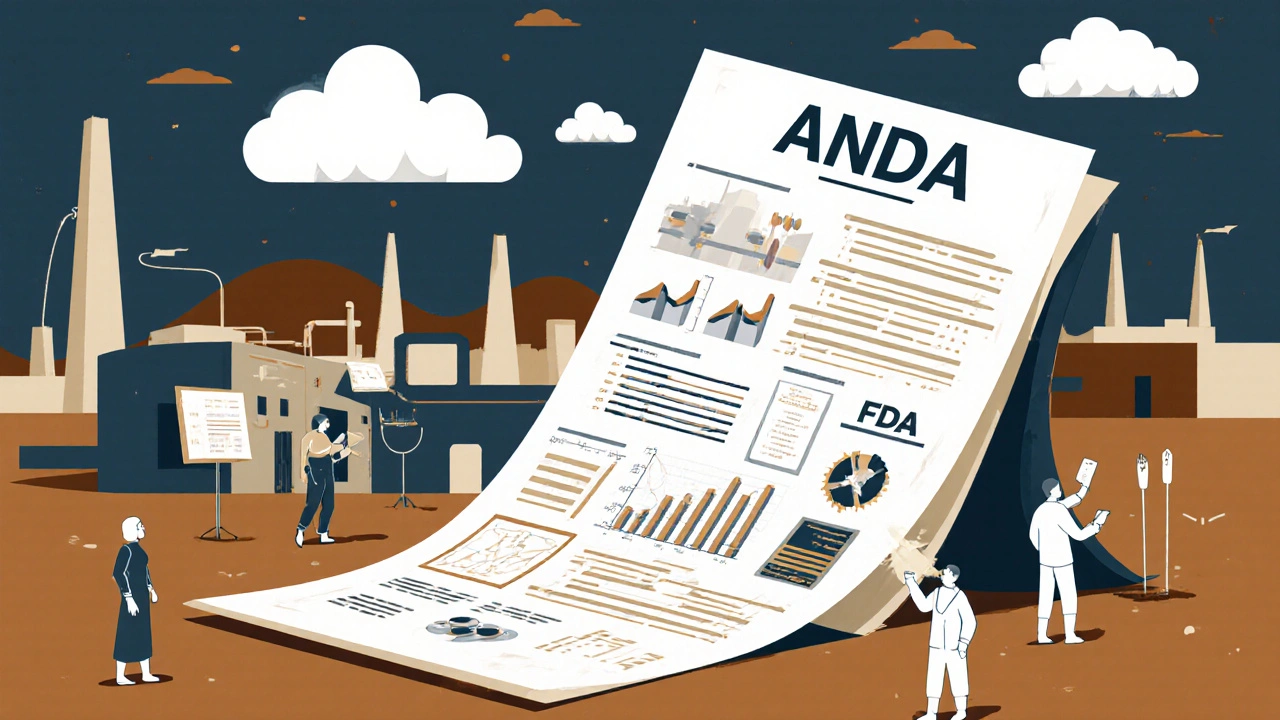
Patent Certifications and Legal Hurdles
One of the most complex parts of the ANDA process is navigating patents. Under Hatch-Waxman, you must file one of four certifications:
- Paragraph I: No patent listed for the drug.
- Paragraph II: The patent has expired.
- Paragraph III: The patent will expire on a certain date-you’ll wait until then.
- Paragraph IV: The patent is invalid or won’t be infringed.
Paragraph IV is the most aggressive-and the most risky. If you file it, the brand-name company has 45 days to sue you for patent infringement. If they do, the FDA can’t approve your drug for 30 months, even if your product is perfect. This is called a “30-month stay.”
Some brand companies abuse this system by filing dozens of weak patents on minor changes-like coating color or packaging-to delay generics. This is called “evergreening.” In 2023, Harvard’s Dr. Aaron Kesselheim found that brand manufacturers filed 1,450 new patents on existing drugs between 2015 and 2020. These tactics have stretched approval times for some generics from 30 months to over 4 years.
Complex Generics: The New Challenge
Not all drugs are easy to copy. Inhalers, nasal sprays, topical creams, and injectables are considered “complex generics.” Their effectiveness depends not just on the chemical, but on the delivery system. A generic inhaler might have the same drug-but if the aerosol spray doesn’t reach the lungs the same way, it won’t work.
The FDA’s approval rate for complex generics is only 42% on first review, compared to 78% for simple pills. Companies often spend millions more and wait years longer to get approval. Teva’s generic version of Advair Diskus took 42 months and $28 million in extra costs because the FDA kept asking for better device testing.
The FDA is trying to fix this. In 2023, they launched a $15 million initiative to develop better scientific tools for testing complex products. They’re also increasing pre-ANDA meetings-where companies can get feedback before submitting-to 1,842 in 2022 alone.
How Long Does It Take?
Under GDUFA III (2023-2027), the FDA aims to review standard ANDAs in 10 months and priority ones in 8 months. But reality is slower. The average review time is now 36 months, up from 30 months in 2015. Why? Because more applications are incomplete. The FDA refuses to review 147 specific issues-from missing stability data to poorly written bioequivalence protocols.
Some companies get lucky. Lupin Limited got approval for a generic version of Jardiance in just 9.5 months because they submitted a “clean application” with flawless CMC and bioequivalence data. Others get stuck in cycles of deficiency letters, which can add years.
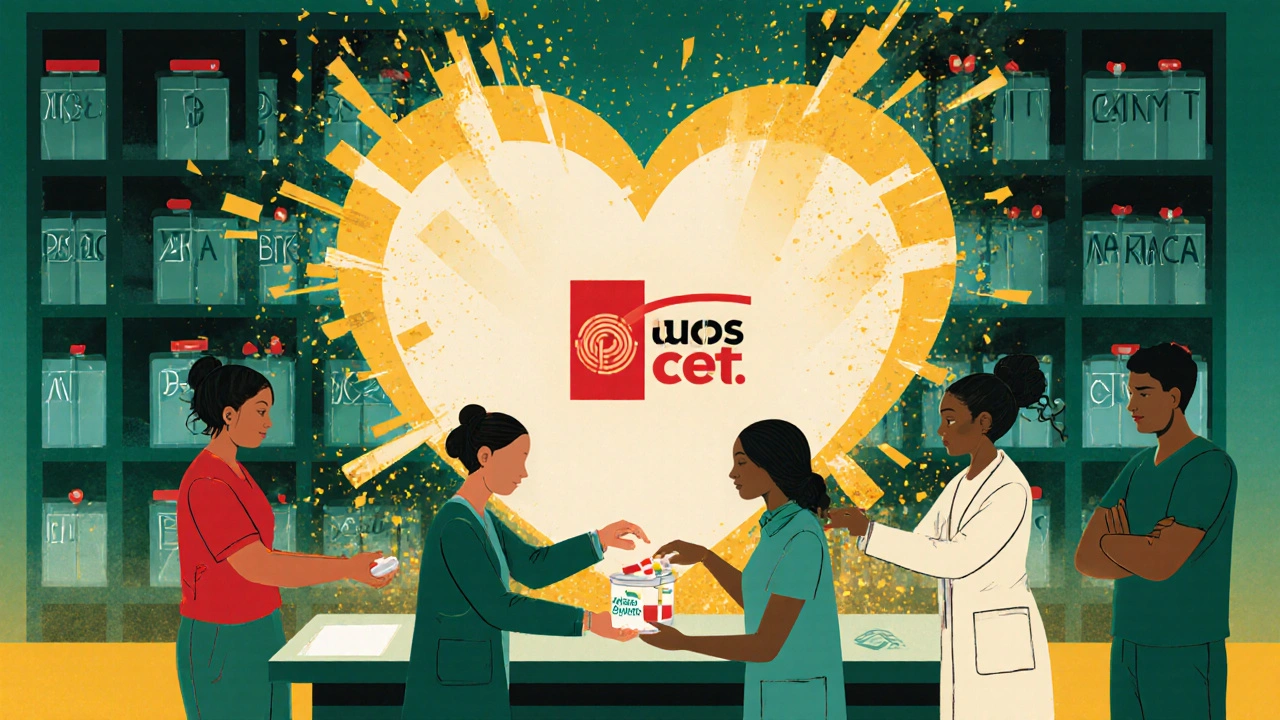
Who’s Winning the Market?
Generic drug sales hit $127.3 billion in 2022. Teva leads with 18.7% of the market, followed by Sandoz and Amneal. But the real winners are patients. Generic competition drives prices down 80-85% in the first year after launch. After multiple generics enter, prices drop by 90%.
For chronic conditions like hypertension or diabetes, generic use is over 93%. That’s not just savings-it’s access. A diabetes patient who can’t afford $500 a month for the brand can now pay $10 for the generic.
What Happens After Approval?
Getting approval isn’t the end. The FDA can inspect your facility at any time. If they find violations, they can pull your drug from the market. You must report any changes to your manufacturing process, supplier, or formula. Even a new packaging supplier requires a prior approval supplement-and another $5,000 fee.
There’s also post-market surveillance. If patients report unexpected side effects, the FDA can require new studies or label changes. You’re legally responsible for the safety of your product, even if it’s a generic copy.
How to Get Started
If you’re a company looking to enter the generic market:
- Find the right Reference Listed Drug (RLD) in the FDA’s Orange Book.
- Check all patents and exclusivity periods-don’t assume they’re expired.
- Build a GMP-compliant facility or partner with one that is.
- Hire a regulatory affairs team with real ANDA experience. The average professional needs 2-3 years to master this.
- Consider a pre-ANDA meeting with the FDA. It costs nothing but can save you millions.
- Prepare your CMC section like your life depends on it-because it does.
Most failures happen before submission. Companies rush the CMC section, skip stability testing, or misunderstand bioequivalence requirements. The FDA doesn’t give second chances on paperwork. If your application is refused to receive, you lose your place in line-and your fee.
Future of the ANDA Process
The FDA is investing in AI tools to speed up document review and real-time communication with applicants. The goal: cut approval times for simple generics to 24 months by 2027. But complex products will still take longer.
Legislation like the Affordable Prescriptions for Patients Act of 2023 aims to limit patent thickets and stop brand companies from blocking access to samples needed for testing. That could remove one of the biggest barriers for generics.
For now, the ANDA process remains the backbone of affordable medicine in the U.S. It’s not perfect. It’s not fast. But it works. Millions of people rely on it every day. And if you’re trying to build a generic drug company, understanding its legal and technical requirements isn’t optional-it’s survival.
What is the difference between an ANDA and an NDA?
An NDA is for brand-name drugs and requires full clinical trials to prove safety and effectiveness. An ANDA is for generic drugs and only requires proof that the drug is bioequivalent to the brand version. The NDA process takes 10-15 years and costs over $2 billion. The ANDA process takes 3-5 years and costs $5-10 million.
Do generic drugs work as well as brand-name drugs?
Yes. The FDA requires generic drugs to have the same active ingredient, strength, dosage form, and bioequivalence as the brand drug. They must deliver the same amount of medicine into the bloodstream at the same rate. Over 90% of prescriptions in the U.S. are filled with generics, and they are used safely every day by millions of patients.
Why do some generic drugs take longer to get approved?
Complex generics-like inhalers, nasal sprays, or topical creams-require more testing because their delivery system affects how the drug works. The FDA has stricter standards for these, and many applications are incomplete or poorly designed. Patent litigation, especially from Paragraph IV certifications, can also delay approval by years.
Can a generic drug company change the formula of the brand drug?
No, not under a standard ANDA. The active ingredient, strength, dosage form, and route of administration must be identical. If you want to change the formula-for example, to make it easier to swallow-you must file a 505(b)(2) NDA instead, which requires additional clinical data and costs much more.
What happens if the FDA rejects my ANDA?
If your application is refused to receive (RTF), it’s rejected before review because it’s missing key information. If it’s reviewed and denied, you’ll get a complete response letter explaining the issues. You can resubmit after fixing the problems, but you’ll lose your place in line and may need to pay another fee. Many companies hire regulatory consultants to avoid this.

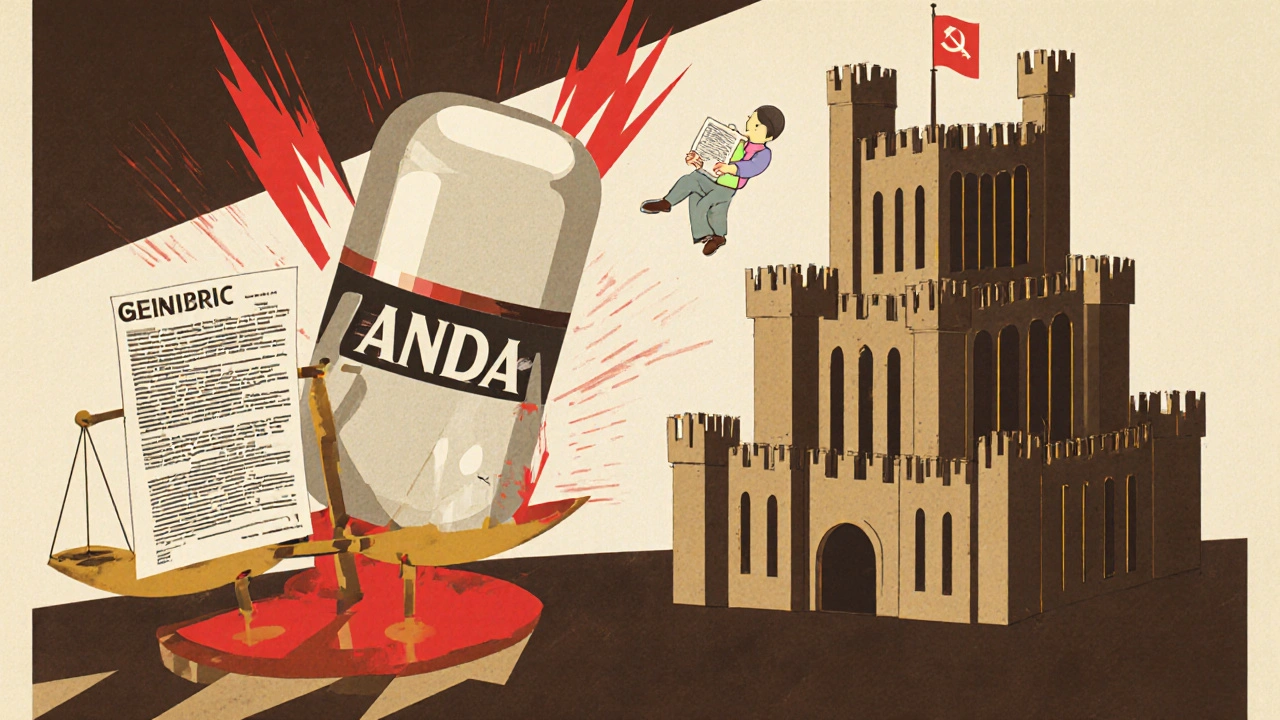
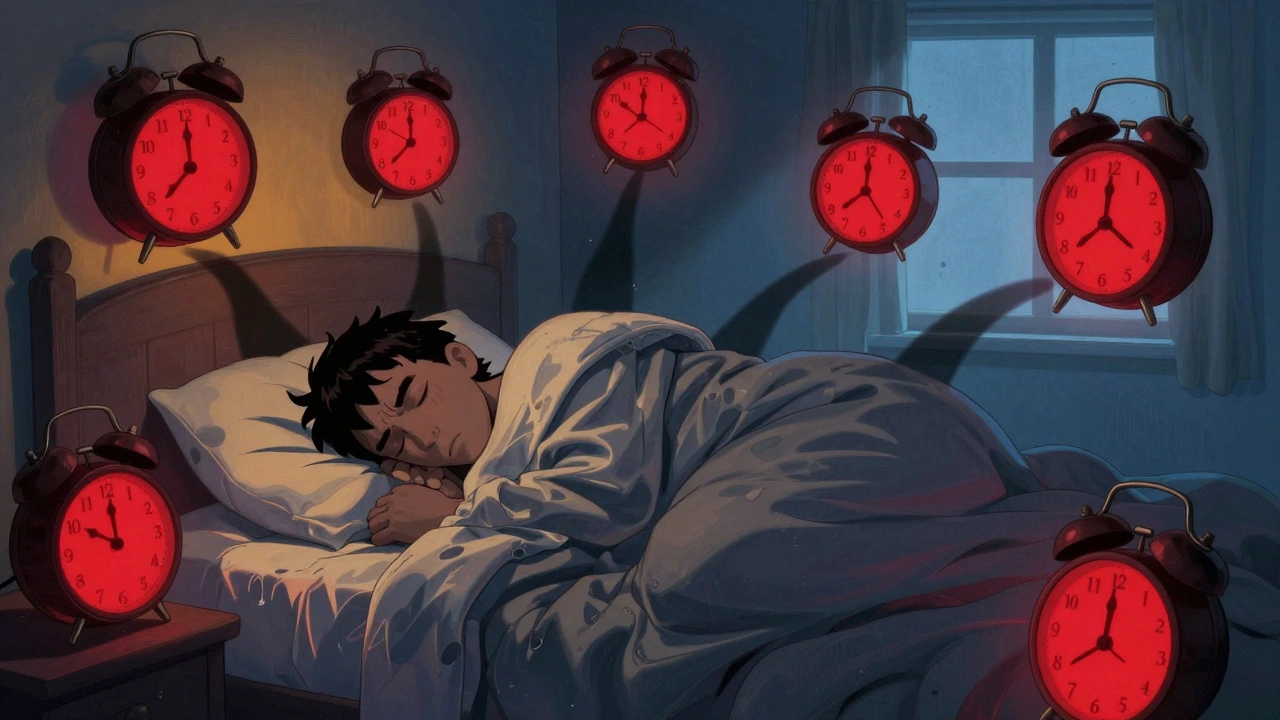
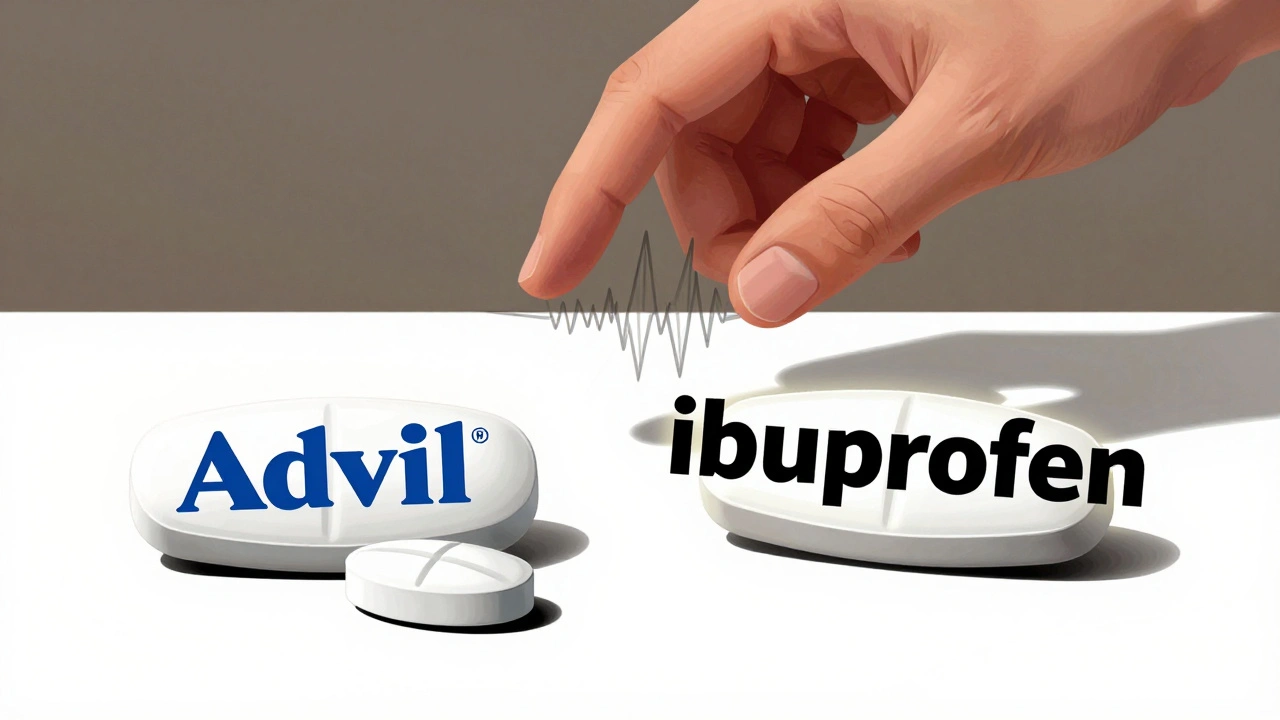

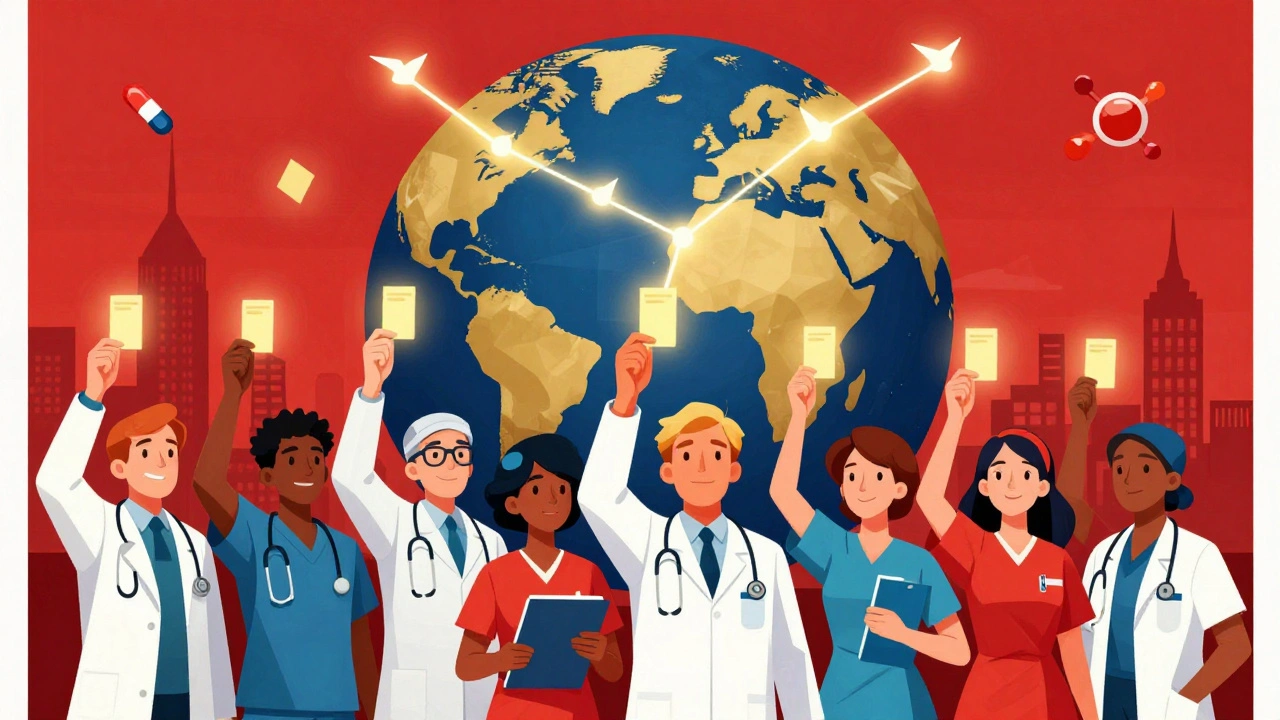

Noel Molina Mattinez
November 16, 2025 AT 22:57The FDA is just another bureaucracy that loves to delay life-saving meds with paperwork
They dont care if you die waiting for a generic to clear their 36-month review cycle
Its all about control not patients
Roberta Colombin
November 18, 2025 AT 13:18It's important to remember that this system helps so many people afford their medicine
Without generics, many would choose between food and insulin
The ANDA process is far from perfect but it saves lives every day
Dave Feland
November 19, 2025 AT 04:17Let me be perfectly clear: the notion that bioequivalence is sufficient is a dangerous fallacy rooted in statistical manipulation
The 80-125% confidence interval is a mathematical fiction designed to appease corporate interests
Pharmacokinetics cannot capture neurochemical variability across populations
And the FDA's reliance on healthy volunteers ignores the elderly, the immunocompromised, and those with polypharmacy
This is not science-it is regulatory theater masquerading as public health
Ashley Unknown
November 19, 2025 AT 14:33Have you ever heard of the Great Generic Scandal of 2018? No? Because they buried it
There were over 200 cases where generics caused seizures because the fillers were contaminated with industrial-grade talc
The FDA knew. They just didn't tell anyone
And now they want us to believe that a 10mg tablet is exactly the same as another 10mg tablet?
Wake up. The drug companies and the FDA are in bed together
They're not protecting us-they're protecting profits
And don't even get me started on the 1,450 patents filed to block generics
It's not innovation-it's corporate warfare
And we're the ones paying with our health
Georgia Green
November 21, 2025 AT 12:43the cmmc section is where most apps fail
so many companies skip stability testing or use the wrong solvent
and then wonder why they get refused
its not the fda being slow-its them submitting garbage
and yes i messed up a few times too when i started
just get a good regulatory consultant
theyre worth every penny
Christina Abellar
November 22, 2025 AT 10:08This system works. It’s not perfect, but it gets life-saving drugs to people who need them at a fraction of the cost.
Eva Vega
November 24, 2025 AT 02:23The GDUFA user fee structure represents a critical fiscal mechanism that enables expedited regulatory review cycles while maintaining compliance with statutory obligations under the Prescription Drug User Fee Act framework
Failure to adhere to eCTD formatting standards constitutes a non-trivial administrative deficiency that triggers RTF status
Sylvia Clarke
November 26, 2025 AT 01:46Oh, so the FDA is now the noble guardian of public health? How quaint.
Let’s not forget that the same agency approved Vioxx, then sat on its hands while thousands died
And now they’re the arbiters of bioequivalence?
Meanwhile, brand companies are filing patents on the color of the pill coating-because apparently, that’s innovation now
And we’re supposed to trust this system? Please.
It’s a beautiful facade built on corporate bribes and regulatory capture
And the real tragedy? People believe it works-because they have no choice
Jennifer Howard
November 27, 2025 AT 00:10How can anyone still defend this broken system? The FDA is a puppet of Big Pharma, and these so-called generics are often manufactured in facilities with rodent infestations and unsanitary conditions
And you think a patient with diabetes is getting the same medicine? Ha!
The active ingredient might be the same-but the binders, the coatings, the fillers-they're all cheap, toxic junk
And you call this healthcare?
People are dying because they can't afford the brand, and now they're getting poison labeled as generic
And the government just collects their $129,500 fee and calls it a day
This isn't medicine-it's a crime
Abdul Mubeen
November 27, 2025 AT 04:08Why are we even discussing this? The entire system is a farce
Why should Americans pay for a drug that's made in India with Chinese ingredients, approved by an agency that hasn't inspected the factory in five years?
And you call this 'affordable'? It's just a different kind of exploitation
At least in Europe they have real oversight
Here? It's a free-for-all
Joyce Genon
November 28, 2025 AT 14:30Let me just say this: the whole ANDA process is a joke
They say it saves money-but where’s the money going? Not to patients
It’s going to Teva’s CEO, who made $18 million last year while patients still can’t afford their meds
And the bioequivalence studies? 24 healthy young men? That’s not representative of anyone who actually takes these drugs
And don’t get me started on the 30-month stays-those are just legal extortion
Brand companies don’t even need to prove their patents are valid-they just file them and wait
And the FDA? They just sit there collecting fees while the system collapses
It’s not broken-it’s designed this way
John Wayne
November 29, 2025 AT 09:45Anyone who thinks generics are identical to brand drugs is either naive or lying
The FDA’s 80-125% range is a mathematical loophole that allows for massive variability
And you think a diabetic patient can’t tell the difference between a $10 generic and a $500 brand?
They can. And they’re being told to shut up
This isn’t science-it’s corporate propaganda dressed up as policy
Julie Roe
November 29, 2025 AT 15:27I’ve worked in pharma for 15 years and I’ve seen this process from the inside
Yes, it’s slow. Yes, it’s messy. But it’s the best system we have
People think it’s all about cutting corners-but the truth is, the FDA has to be this strict because lives are on the line
I’ve seen generics fail because a manufacturer changed the granulation process by 2%-and it caused a spike in adverse reactions
That’s why the CMC section matters so much
And yes, the patent games are terrible-but the system does work for most people
It’s not glamorous, but it’s saving millions every day
Just don’t expect it to be fast or pretty
jalyssa chea
November 30, 2025 AT 06:12why do they even bother with all this paperwork
its just a pill
they should just let anyone make it
who cares if its a little different
people need it
the fda is just stopping progress
and dont even get me started on the fees
its all about money not medicine